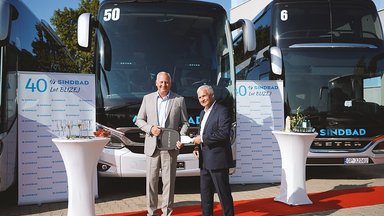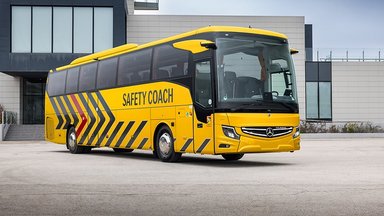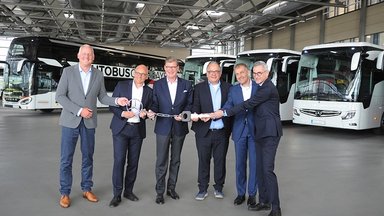
Daimler Buses: safety moves forward
Download
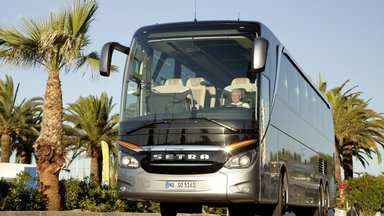
Daimler Buses: safety moves forward
Daimler Buses installs comprehensive safety packages in its vehicles High level of fresh air for driver and passengers guaranteed Seats with lumbar support and space-enhancing seating variants Stuttgart. The bus business is on the move again. The driving ban for German bus companies implemented during the Covid-19 pandemic has been lifted and the market for bus travel is reviving again in some segments. If you decide to…
- Daimler Buses installs comprehensive safety packages in its vehicles
- High level of fresh air for driver and passengers guaranteed
- Seats with lumbar support and space-enhancing seating variants
Stuttgart. The bus business is on the move again. The driving ban for German bus companies implemented during the Covid-19 pandemic has been lifted and the market for bus travel is reviving again in some segments. If you decide to travel on a Mercedes-Benz or Setra bus, you are guaranteed the highest possible level of safety with excellent comfort.
Till Oberwörder, Head of Daimler Buses, strives to keep things that way: "The safety of passengers and drivers in our touring coaches is top priority for us. That is why we are offering our customers numerous retrofit solutions to protect against infection for our Mercedes-Benz and Setra buses. By continuously further developing our vehicles with regard to safety and climate comfort, we are doing everything to ensure that passengers and drivers always arrive safely at their destination and in the best of health."
Up to 100 percent fresh air
In a Mercedes-Benz or Setra touring coach, passengers can forget about the wind and bad weather outside. Fully automatic integral air conditioning or fully-functional roof-mounted air conditioning provide for an evenly distributed temperature - from the first to the last row of seats.
The vehicles have powerful climate control systems with high air flow which develop their maximum efficiency when the doors and windows are closed. Depending on the air conditioning system, a complete change of air under a minute is possible. Depending on the type of bus, the external temperature and the type of air conditioning, a 100 percent level of fresh air in the passenger compartment is possible.
For vehicles with passive ventilation elements such as hinged windows and roof hatches, ventilation is via manual operation of these components. Longer opening times of doors on regular-service buses at bus stops, for example, can also have a positive effect on the exchange of fresh air.
Roof-mounted air conditioning in three output categories
Setra ComfortClass and Mercedes-Benz Tourismo buses are available with roof-mounted air conditioning. The low-maintenance and low-consumption systems are equipped with a high-performance condenser blower and enlarged air filters, which help remove dust and should be replaced every six months. With the three output categories 32, 35 and 39 kW, the touring coaches provide the right climate control for every area of operation and each vehicle length.
Other measures in preparation
In order to give passengers and drivers even better protection in the further course of the Covid-19 pandemic, Daimler Buses offers retrofit solutions for driver protection screens made of glass and polycarbonate plastic. They are already available for the Mercedes-Benz Citaro and for the Setra LE business low-entry inter-city bus. Preparatory work for their installation in touring coaches is picking up pace.
Further measures are, for example, the optimisation of air conditioning filters and the definition of measures which ensure optimum ventilation of the vehicle when it is stationary. The engineers are working at full speed to increase the level of fresh air even further, and further reduce the concentration of critical air components in buses, which in future can also be equipped with sanitiser dispensers.
The safety of passengers, drivers and other road users is and always has been a top priority at Daimler. For many years, the Stuttgart-based group has played a pioneering role in the development of technologies which help prevent accidents. Virtually all assistance systems for active and passive safety were first premiered in the buses from Mercedes-Benz and Setra.
The Association of German Bus Operators (bdo) confirms that "travelling by bus is not only comfortable, but also a safe and clean travel option. This is confirmed by studies from the TÜV testing organisation as well as in figures from the German Federal Statistics Office. TÜV continues to confirm this year after year: in Germany, coaches and buses are the safest means of transport," says a declaration by the bdo.
Concepts for active and passive safety
A current example of Daimler Buses' comprehensive concept for increasing active safety is Active Brake Assist 4 (ABA 4). As the first system of its kind worldwide, it warns the driver of imminent collisions with moving pedestrians and simultaneously initiates automatic partial braking.
The new Sideguard Assist (SGA) initially informs drivers when an obstacle has been detected in the warning zone. In a second stage, the driver receives a warning if there is a risk of a collision. Autonomous intelligent cruise control (AICC) has been successful for many years. If the system detects a slower-moving vehicle in front, it brakes the bus automatically.
Attention Assist (AtAs) on the other hand is a safety system that focuses on the driver. Using a variety of criteria such as steering movements, brake use or vehicle speed, it constantly monitors information about the driver's activity level. Attention Assist then correlates the data recorded and the adapted driver profile to determine the driver's level of fatigue, for example.
Crash elements protect the driver
Keyword: passive safety. Here, Front Collision Guard (FCG) provides unique protection for the driver and tour guide. The system consists of a crossmember which forms an underride guard in the event of an accident. The structure behind this member consists of crash elements that specifically dissipate kinetic energy in the event of an impact. In addition, the driver's cockpit within the bus, including the steering wheel, pedals and seat, is mounted on a solid frame component that can move back entirely in the event of a serious head-on collision.
Foresightedly sustainable
Touring coaches from Mercedes-Benz and Setra not only mean maximum safety but also high cost-effectiveness, a long range and low fuel consumption, coupled with reduced emissions. The optimised aerodynamics of the chassis and the current Euro 6 engine generation contribute to helping environmentally conscious companies travel with a clear conscience. After all, a fully loaded bus only uses an average of 0.5 litres of fuel per passenger per 100 kilometres.
Sprung seat cushions
Besides the extensive safety features, the coaches are also very popular with passengers thanks to the exclusive comfort they provide. This includes the seats with comfortable seat backs and sprung seat cushions, low-vibration armrests, and individually adjustable luxury head restraints together with intuitive operation – with integrated seat belts and a defined impact zone. It is not only the panoramic roofs which offer travellers a very special, spacious ambience. Thanks to the generous seating variants with plenty of legroom, you can really stretch out in the buses. For vehicles which meet the criteria of the gbk Bus Comfort Organisation, the five-star distance to the next row of seats can be more than 80 centimetres.
Article assets

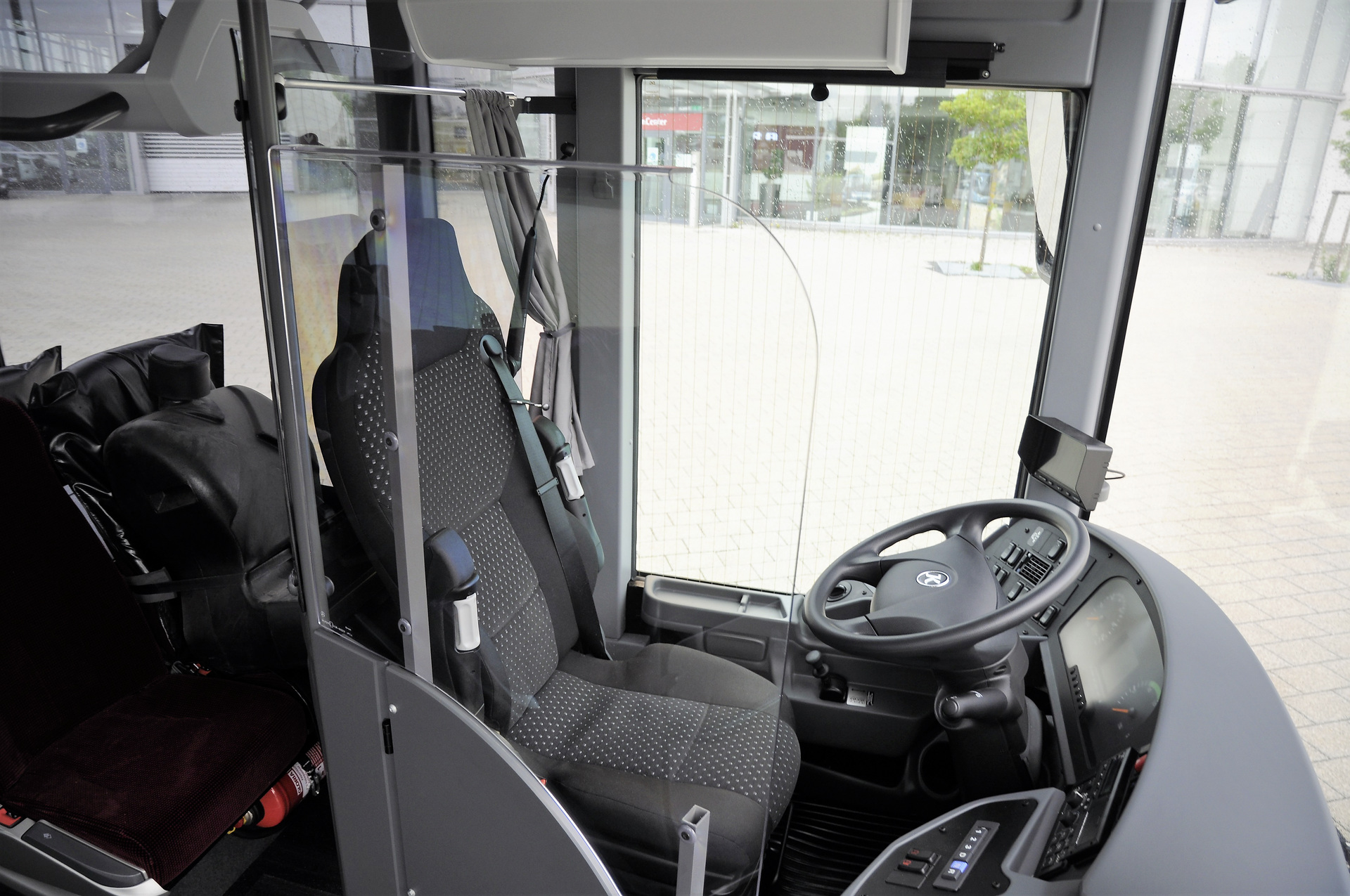
In great demand: retrofit driver protection door now also available for the Setra LE business inter-city bus

Mercedes-Benz Tourismo: Press trial drive: The new Mercedes-Benz Tourismo
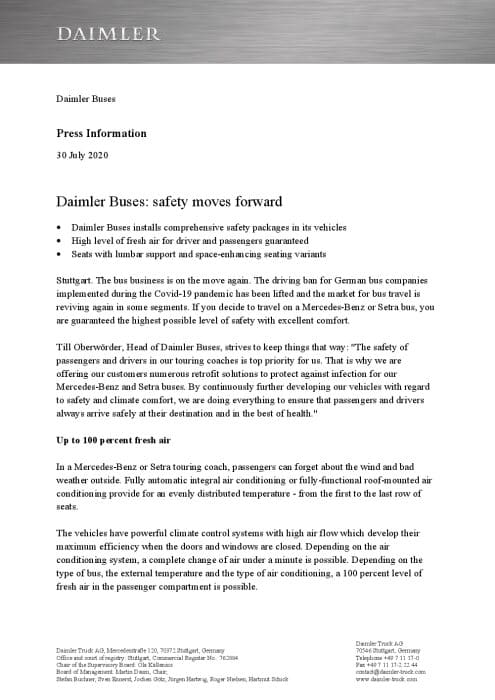
Daimler Buses: Safety moves forward

Udo Sürig
Spokesperson Setra Product & Service Communications
udo.suerig@daimlertruck.com
+49 160 86 16 312




